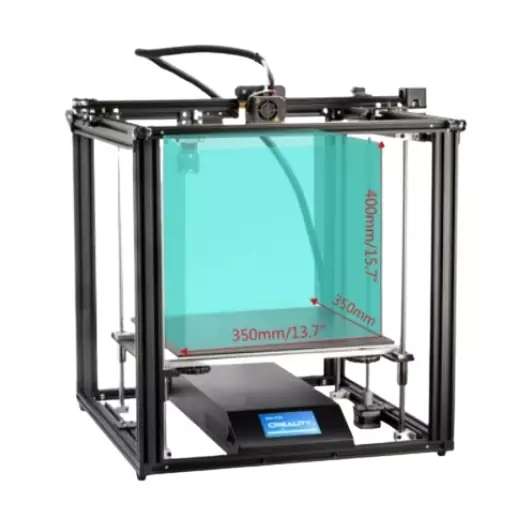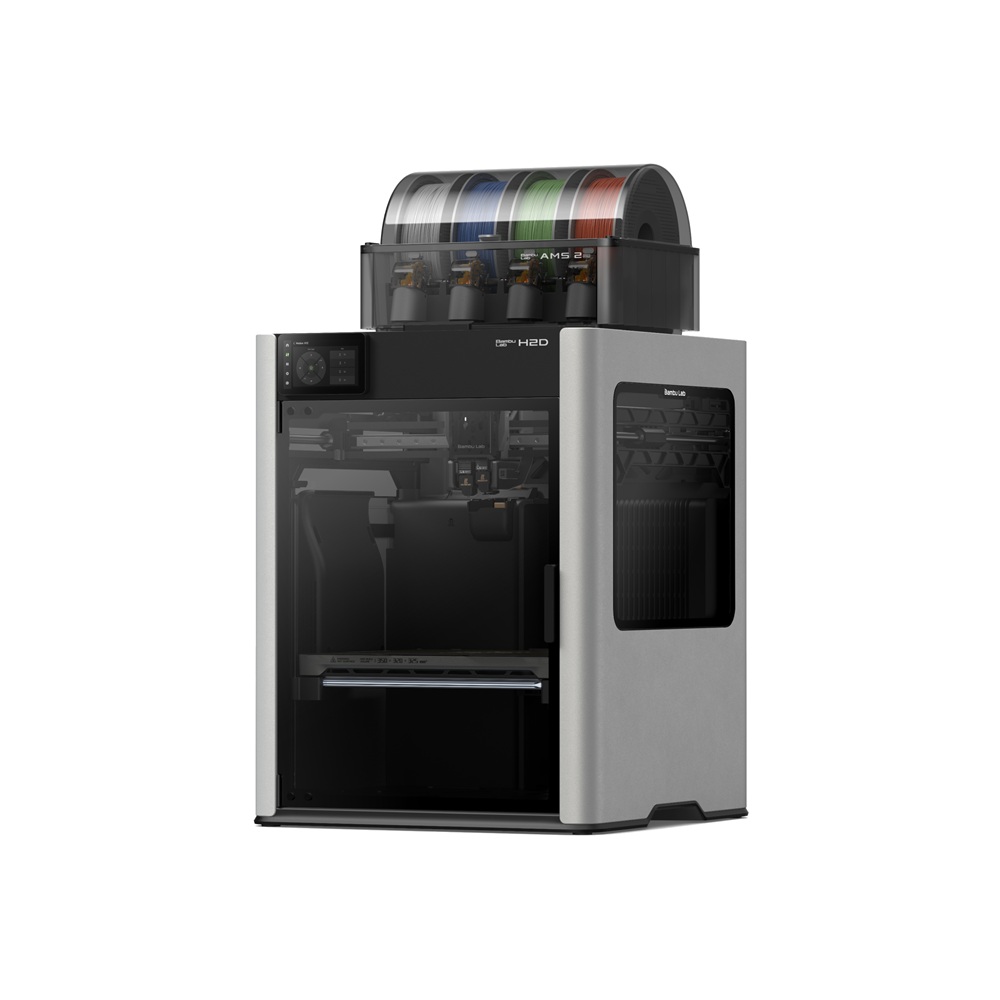Compare Ender 5 Plus vs H2D
Comparison between the best 3D printers
Choose the best 3D printer at the best price. The cheapest 3D printers are here.
Buy a 3D printer here with 3D Fila.
 |
 |
|
| Model | Ender 5 Plus[BUY Ender 5 Plus] |
H2D |
| Printing Material | Filament | Filament |
| Buy Filament for Creality 3D Ender 5 Plus | Buy Filament forBambu Lab H2D | |
| Estimated price | $599,00 | $1899,00 |
| Manufacturer | Creality 3D | Bambu Lab |
| Release Year | 2019 | 2025 |
| Print Volume [mm] | 350x350x400 | 350x320x325 |
| Printer Size [mm] | 632x619x666 | 492x514x626 |
| Weight [kg] | 18,2 | 42,3 |
| Power Loss Recovery | YES | YES |
| Enclosed printer | NO | YES |
| Bed Leveling | Automatic | Automatic |
| Filament End Sensor | YES | YES |
| Bed type | Heated | Heated |
| Power supply system | Bowden | Direct Drive |
| Standard nozzle | 0,4 | 0,4 |
| Maximum Nozzle Temperature [°C] | 260 | 350 |
| Maximum Bed Temperature [°C] | 100 | 120 |
| Maximum printing speed [mm/s] | 180 | 600 |
| Filament holder | YES | YES |
| Camera for supervision | NO | NO |
| Recommended filaments | PLA, TPU, ABS, PETG | PLA, PETG, ABS, ASA, TPU, PVA, Nylon (PA) |
| Recommended slicers | Cura, Simplify, Slic3r | Bambu Studio |
| Maximum Resolution [mm] | 0,1 | 0,01 |
| Processor | 32 bits | |
| Display | Touchscreen TFT 4,3'' | Touchscreen 5'' |
| Power Supply | 24V / 504W | |
| Connectivity | SD / USB | Wifi, Bambu bus, Cartão SD |
| Operating systems | Windows, Mac, Linux | Windows, Mac, Linux |
| Date of registration in the system | 2021-04-14 | 2025-03-31 |
| Release date | 2019 | 2025 |
| Extra features | The Ender 5 Plus offers a large print volume (350x350x400 mm) and fast assembly. It includes a BLTouch sensor, but with range limitations. It stands out for its dimensional accuracy, although it requires adjustments to the slicer settings. Despite the noise, its integrated design saves space, and includes features such as a filament sensor and power resumption. Ideal for large projects, it requires refinement in the settings for high-quality prints. | Bambu Labs H2D combines high-speed 3D printing with a chamber heated up to 65 °C, dual extrusion with automatic nozzle switching, an AMS for filament drying and exchange, and AI sensors that detect failures. It offers optional laser and digital cutting capabilities, features intelligent calibration through computer vision, vibration control, enhanced fire safety, and real-time camera monitoring. |
| Support for multiple colors and materials (AMS and CFS) | NO | YES |
Notes * |
||
| Cost-benefit | 6 / 10 | 7 / 10 |
| Hardware | 2 / 10 | 8 / 10 |
| Tela | . | . |
| Print volume | 4 / 10 | 4 / 10 |
| Performance | 1 / 10 | 5 / 10 |
| [BUY Ender 5 Plus] |
Conclusion |
| In comparing the Ender 5 Plus and the Bambu Lab H2D, the choice largely depends on the specific needs and budget of the user. The Ender 5 Plus, priced more affordably, offers a decent print volume and essential features like automatic bed leveling and a filament sensor. It is well-suited for hobbyists and those who are looking for a reliable printer for larger projects, though it may require some tweaks in settings for optimal print quality. On the other hand, the Bambu Lab H2D, while significantly more expensive, presents advanced features tailored for professionals. Its impressive maximum printing speed and ability to support dual extrusion and multiple materials make it a standout choice for complex projects and high-demand environments. Additionally, its enclosed design and advanced calibration features enhance safety and ease of use. Ultimately, the Ender 5 Plus is ideal for those on a budget seeking a capable 3D printer. In contrast, the Bambu Lab H2D caters to users willing to invest more for greater capabilities, speed, and versatility in their 3D printing endeavors. Depending on the primary use case—hobbyist versus professional—the decision between these two models becomes clear. |

